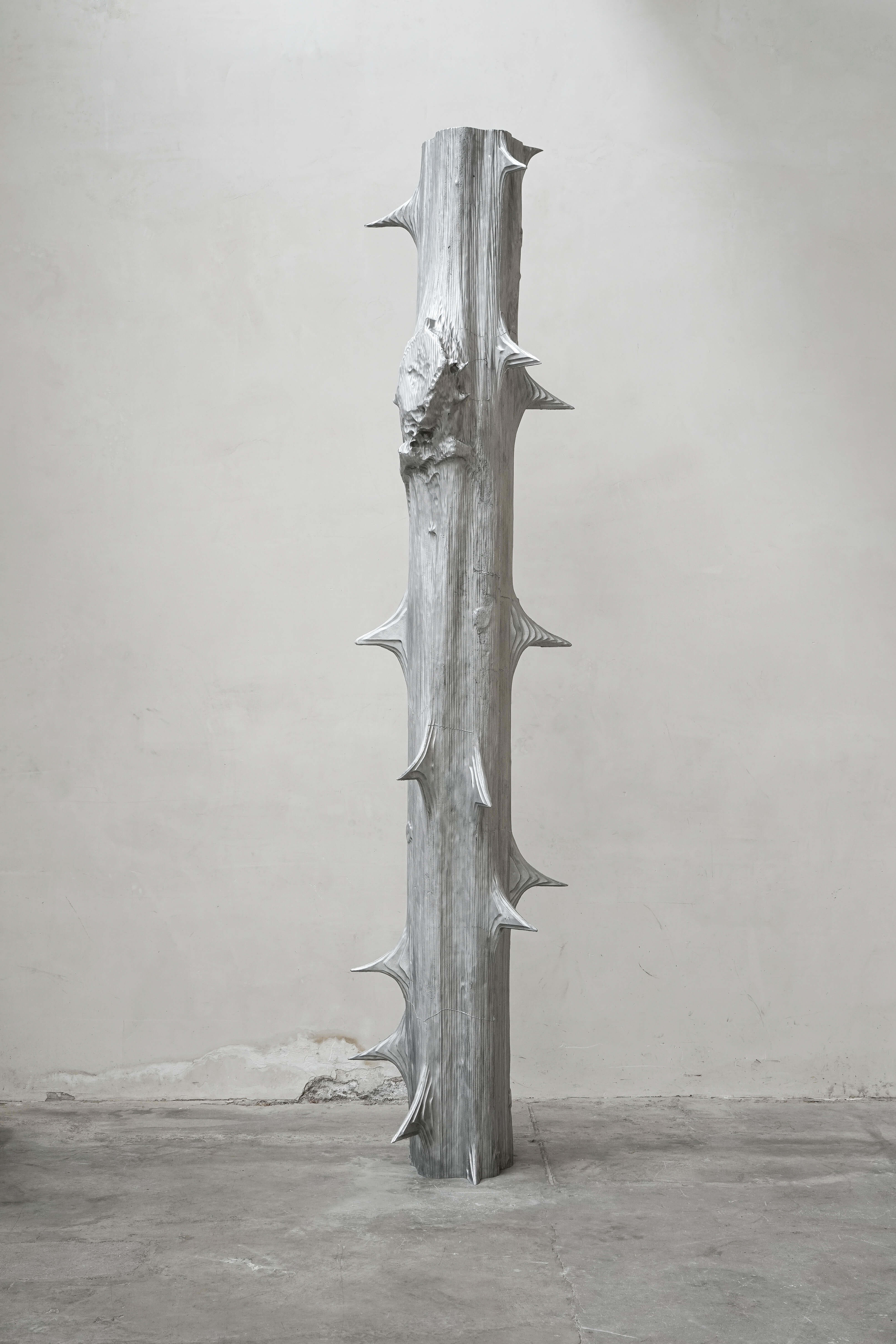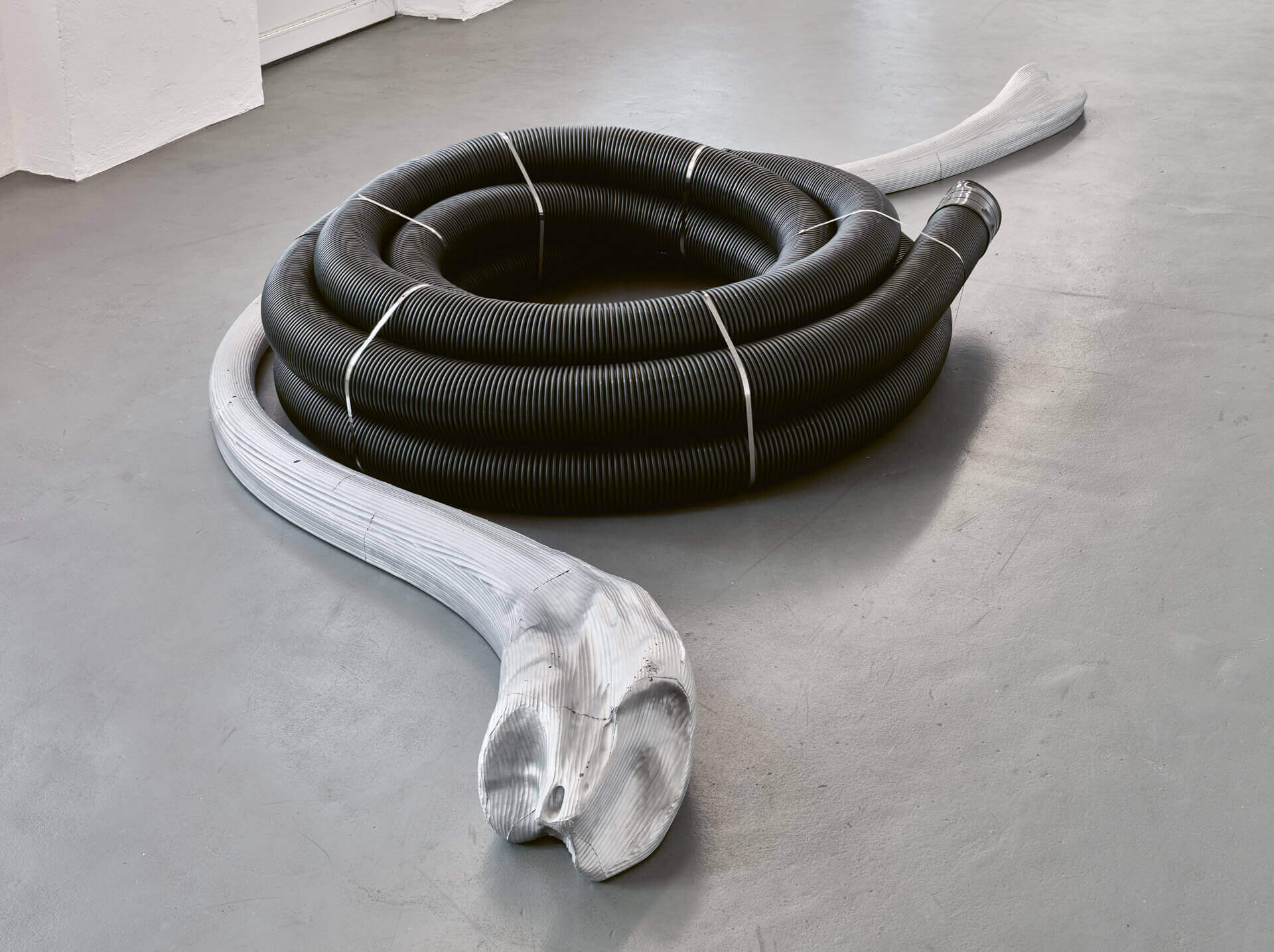In her sculptures Alice Channer (*1977, Oxford, UK, lives and works in London) explores the relationship between materials, bodies, machines and industrial or technological pro-cesses. With relish, she combines her highly industrialised objects with human gestures or with natural traces such as physical or geological remains.
The exhibition Heavy Metals / Silk Cut spans across the two buildings of the Kunstmuseum and the Kunsthalle Appenzell. It features new works, including an architectural intervention, complemented by an overview of sculptures, drawings and installations from the last decade.
In her explorations of materials and processes, Alice Channer casts and bends metals or folds fabrics, draws with cigarette ash and manifests the hidden dimensions of the world of matter. She offers a perspective on what lies beyond the categories and assumptions that shape our perception of objects and our relationship to them. Channer’s works consist of geological and natural materials or representations of natural elements, such as shells, fingers or stones. The artist transforms these in profound, synthetic processes, often in professional manufacturing facilities that have nothing to do with the production of art, such as factories for paint coating or the chemical industry. She had, for example, the shells of spider crabs and brown crabs vacuum-metallised, allowing the authentic physicality of these objects to collide with the result of identical, rhythmic and mechanical working steps. Industrial methods of production, such as the precision engineering of CNC milling to shape aluminium into the desired form or couture techniques to fold images of geological layers in heavy crêpe de Chine, are constitutive of form. Channer relentlessly juxtaposes the organic and the artificial, the biological and the industrial, weaving the traces of production processes into the language of her sculptures. She not only confronts her artistic signature with the cold aesthetics of mechanical shaping, but also points to the fragility of the ecology with these seductive yet fragile exoskeletons.































